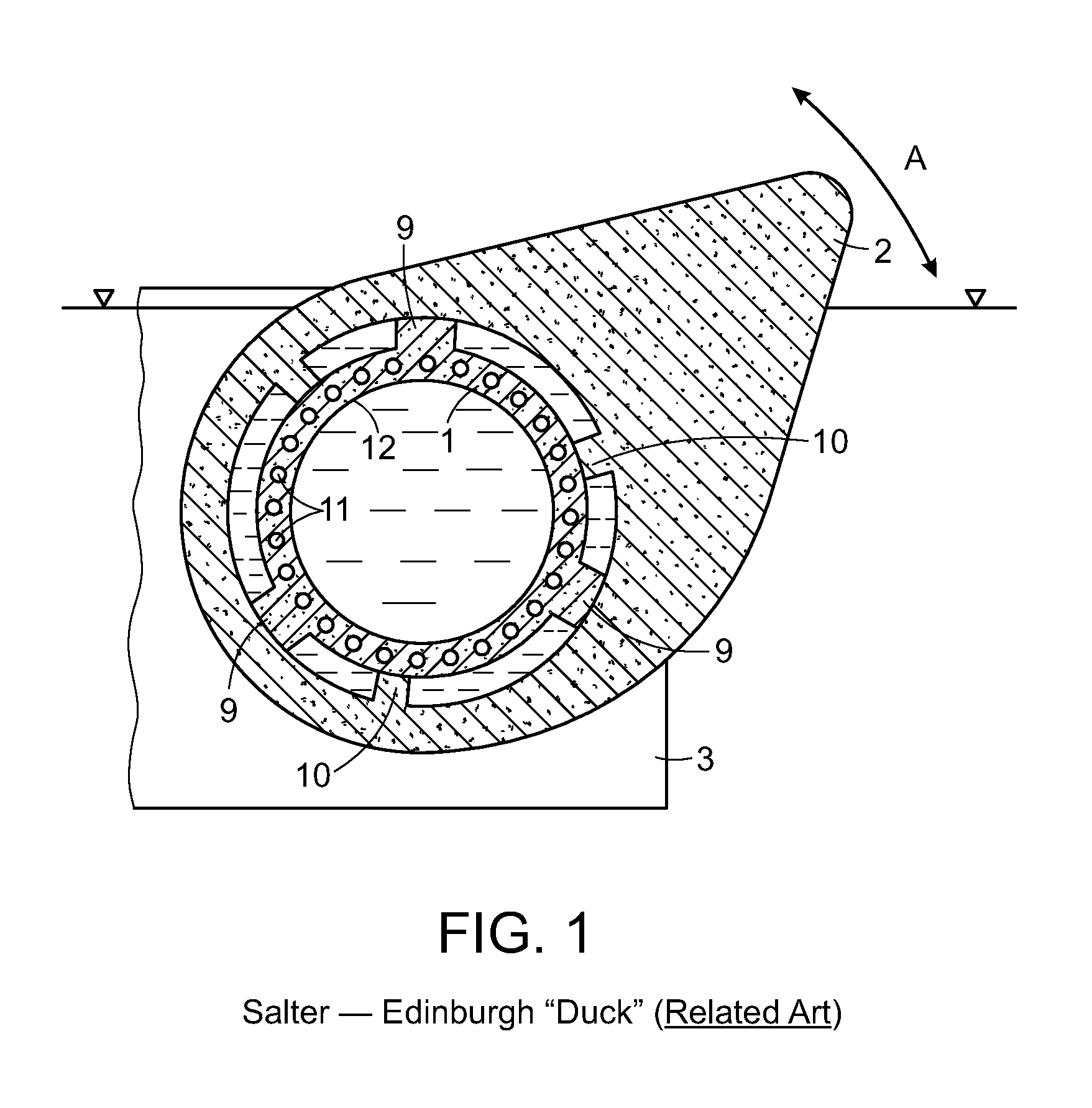Multi Mode Wave Energy Converter With Elongated Wave Front Parallel Float Having Integral Lower Shoaling Extension
a wave front and wave energy converter technology, applied in the field of wave energy converters, can solve the problem of high capital cost (capex)
- Summary
- Abstract
- Description
- Claims
- Application Information
AI Technical Summary
Benefits of technology
Problems solved by technology
Method used
Image
Examples
Embodiment Construction
[0041]FIG. 1 and FIG. 2 of the Salter Duck and the Columbia StingRay, respectively, are related prior art and are described in their references cited including GB1482085 (Salter) and US 2015 / 0252777 (Rhinefrank). They are also described and distinguished from the present disclosure in the BACKGROUND OF THE DISCLOSURE and SUMMARY OF THE DISCLOSURE sections above.
[0042]FIG. 3 and FIG. 4 are described in Rohrer U.S. Pat. No. 9,127,640 and Rohrer US 2015 / 0082785, respectively, both of which are incorporated herein by reference and both of which this application is a continuation-in-part. The element numbers used in FIG. 4 and FIG. 5 are consistent with those used to describe the present disclosure.
[0043]FIG. 3 describes a float 3 rotatably attached by swing arms 51 to a buoyant vertical spar frame 20 at pivot point or pivot axis 52. The generator 15 is housed within frame column 20 and driven by rack gear 12 on the float bottom through pinion gear 13 on the frame 20. The FIG. 3 embodime...
PUM
 Login to View More
Login to View More Abstract
Description
Claims
Application Information
 Login to View More
Login to View More - R&D
- Intellectual Property
- Life Sciences
- Materials
- Tech Scout
- Unparalleled Data Quality
- Higher Quality Content
- 60% Fewer Hallucinations
Browse by: Latest US Patents, China's latest patents, Technical Efficacy Thesaurus, Application Domain, Technology Topic, Popular Technical Reports.
© 2025 PatSnap. All rights reserved.Legal|Privacy policy|Modern Slavery Act Transparency Statement|Sitemap|About US| Contact US: help@patsnap.com



